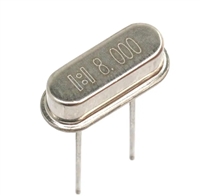| 是否Rohs认证: | 符合 | 生命周期: | Obsolete |
| 包装说明: | FBGA, BGA48,6X8,30 | Reach Compliance Code: | unknown |
| 风险等级: | 5.84 | Is Samacsys: | N |
| 最长访问时间: | 70 ns | I/O 类型: | COMMON |
| JESD-30 代码: | R-PBGA-B48 | 内存密度: | 16777216 bit |
| 内存集成电路类型: | STANDARD SRAM | 内存宽度: | 16 |
| 湿度敏感等级: | 3 | 端子数量: | 48 |
| 字数: | 1048576 words | 字数代码: | 1000000 |
| 工作模式: | ASYNCHRONOUS | 最高工作温度: | 85 °C |
| 最低工作温度: | -40 °C | 组织: | 1MX16 |
| 输出特性: | 3-STATE | 封装主体材料: | PLASTIC/EPOXY |
| 封装代码: | FBGA | 封装等效代码: | BGA48,6X8,30 |
| 封装形状: | RECTANGULAR | 封装形式: | GRID ARRAY, FINE PITCH |
| 并行/串行: | PARALLEL | 电源: | 3/5 V |
| 认证状态: | Not Qualified | 最小待机电流: | 1.5 V |
| 子类别: | SRAMs | 最大压摆率: | 0.092 mA |
| 表面贴装: | YES | 技术: | CMOS |
| 温度等级: | INDUSTRIAL | 端子形式: | BALL |
| 端子节距: | 0.75 mm | 端子位置: | BOTTOM |
| Base Number Matches: | 1 |
| 型号 | 品牌 | 描述 | 获取价格 | 数据表 |
| BS616LV1611TA-55 | BSI | SRAM |
获取价格 |

|
| BS616LV1611TA-70 | BSI | SRAM |
获取价格 |

|
| BS616LV1611TAG55 | BSI | SRAM |
获取价格 |

|
| BS616LV1611TAG70 | BSI | SRAM |
获取价格 |

|
| BS616LV1611TAP55 | BSI | SRAM |
获取价格 |

|
| BS616LV1611TAP70 | BSI | SRAM |
获取价格 |

|
 CP2102资料手册解读:CP2102引脚说明、关键参数分析
CP2102资料手册解读:CP2102引脚说明、关键参数分析

 资料手册解读:UC3842参数和管脚说明
资料手册解读:UC3842参数和管脚说明

 一文带你了解无源晶振的负载电容为何要加两颗谐振电容CL1和CL2
一文带你了解无源晶振的负载电容为何要加两颗谐振电容CL1和CL2

 玻璃管保险丝与陶瓷管保险丝:区别与替代性探讨
玻璃管保险丝与陶瓷管保险丝:区别与替代性探讨
